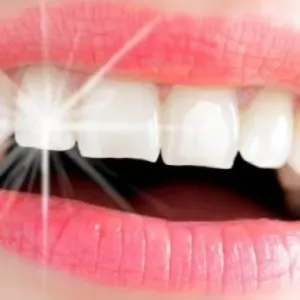أفضل 10 طرق لادخار المال قبل البدء في الاستثمار

مقدمة
قبل أن تبدأ أي رحلة استثمارية، فإن أول خطوة أساسية هي ادخار المال. فالادخار ليس فقط وسيلة لتجميع رأس المال، بل هو أيضًا تدريب عملي على الانضباط المالي الذي يحتاجه كل مستثمر ناجح. سواء كنت ترغب في استثمار بسيط في الأسهم أو تخطط لشراء عقار في المستقبل، لا يمكنك القفز مباشرة إلى عالم الاستثمار دون أن يكون لديك قاعدة مالية صلبة.
في هذا المقال، سنستعرض أفضل 10 طرق فعّالة لادخار المال تساعدك على تجميع رأس المال الذي تحتاجه لبداية استثمارك بثقة وأمان.
لماذا الادخار ضروري قبل الاستثمار؟
1. تكوين رأس مال مبدئي
الادخار هو الوسيلة الأساسية لجمع الأموال التي تحتاجها كبداية للاستثمار، خاصة إذا لم يكن لديك مصدر دخل كبير.
2. تجنب الاقتراض
الادخار يقلل حاجتك إلى الاستدانة أو الاقتراض، مما يجعلك تبدأ مشروعك أو استثمارك من دون ديون تثقل كاهلك.
3. بناء عادة مالية إيجابية
الادخار المنتظم يعلمك الالتزام والانضباط المالي، وهما أساسا النجاح في عالم الاستثمار.
أفضل 10 طرق لادخار المال بفعالية
1. تحديد هدف مالي واضح
ابدأ بتحديد المبلغ الذي تريد ادخاره والمدة الزمنية. وجود هدف ملموس يحفزك على الاستمرار.
2. إنشاء ميزانية شهرية
قم بتتبع دخلك ونفقاتك، وحدد المبالغ التي يمكنك اقتطاعها شهريًا. استخدم تطبيقات مثل Mint أو YNAB لمساعدتك.
3. قاعدة 50/30/20
خصص 50% من دخلك للاحتياجات الأساسية، 30% للرغبات، و20% للادخار والاستثمار.
4. التوفير التلقائي
قم بضبط خصم تلقائي من حسابك البنكي إلى حساب التوفير كل شهر، وبهذا تدخر دون أن تشعر.
5. تجنب المشتريات العاطفية
لا تشتري بدافع التوتر أو الملل. انتظر 24 ساعة قبل أي شراء غير ضروري.
6. استخدم القسائم والعروض
تسوق بذكاء باستخدام القسائم والكوبونات، واغتنم التخفيضات الموسمية.
7. إعداد وجبات في المنزل
الطعام الجاهز مكلف جدًا. إعداد الوجبات في المنزل يوفر الكثير من المال شهريًا.
8. تقليل الاشتراكات الشهرية
راجع اشتراكاتك مثل نتفليكس، سبوتيفاي، أو صالات الرياضة. ألغِ ما لا تستخدمه بانتظام.
9. بيع الأشياء غير المستخدمة
افتح خزانة ملابسك أو مخزنك، وبِع كل ما لم تستخدمه منذ 6 أشهر عبر مواقع مثل OLX أو فيسبوك ماركت.
10. تدوين تقدمك بانتظام
سجل كل تقدم في الادخار، سواء أسبوعيًا أو شهريًا، فهذا سيزيد من حماسك للاستمرار.
كيف تعرف أنك مستعد للاستثمار بعد الادخار؟
1. امتلاك صندوق طوارئ
يجب أن يكون لديك مدخرات تكفي 3 إلى 6 أشهر من نفقاتك قبل البدء في أي استثمار.
2. خلوّك من الديون الاستهلاكية
تأكد من سداد ديونك ذات الفوائد العالية أولًا.
3. وجود مبلغ كافٍ للاستثمار
حدد مبلغًا يمكنك المخاطرة به، دون أن يؤثر على التزاماتك اليومية.
خاتمة
ادخار المال ليس مهمة صعبة كما يبدو، بل هو عادة مالية يمكن أن تغير مستقبلك بالكامل. باتباعك لهذه الطرق العشر، ستتمكن من تكوين رأس مال صغير لكنه كافٍ للانطلاق في عالم الاستثمار بثقة. تذكّر دائمًا: الاستثمار الذكي يبدأ بخطة ادخار ذكية.
الكلمات المفتاحية (Keywords):
ادخار المال، كيف ادخر المال، طرق التوفير، استثمار المال، التخطيط المالي، الادخار للاستثمار، نصائح مالية، كيفية توفير المال، تجميع رأس المال، ميزانية شخصية، الحرية المالية.







